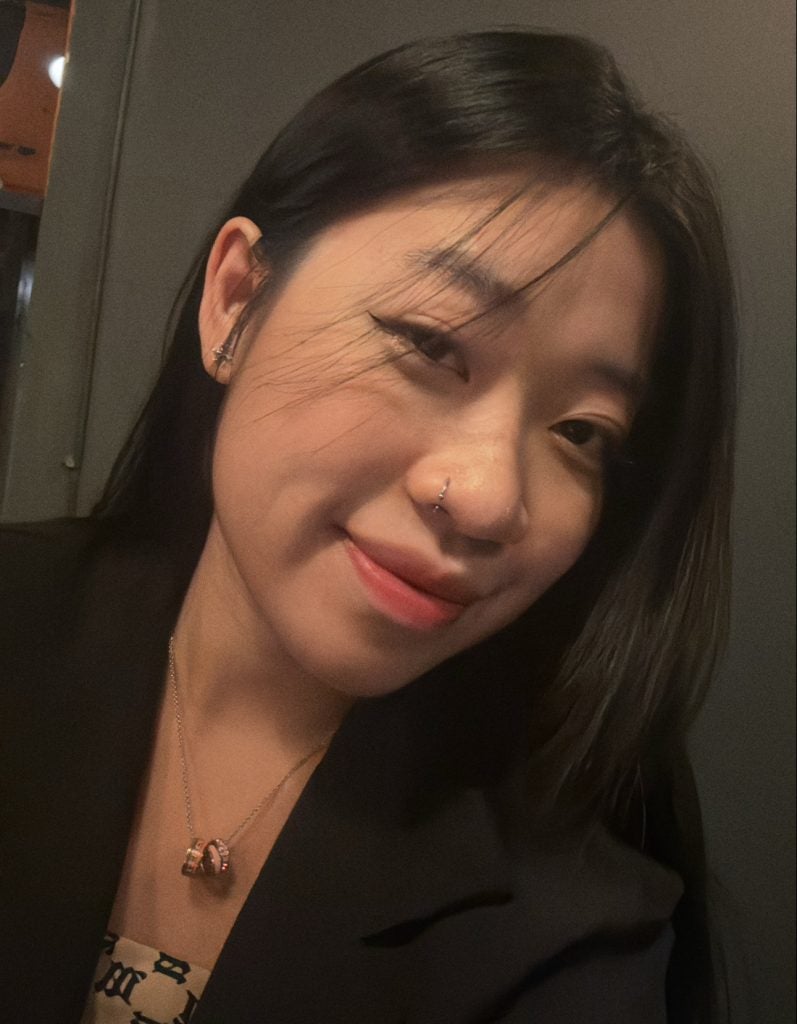‘Celebration of Family’ – Reflections from a Vietnamese Student on Lunar New Year
Looking ahead to Lunar New Year celebrations within several communities, such as Chinese, Korean and Vietnamese, we sat down with a graduate student born and raised in Hanoi, Vietnam to get a personal reflection on what this time of year means to them.
Meet Maya Nguyen (G’25): she is a master’s candidate for the Public Relations & Corporate Communications program at the School of Continuing Studies and is in her second semester.
“Lunar New Year is the celebration of family. It is when you visit your extended family to wish them good health, and success for the new year,” Nguyen said. Explore her lived experiences growing up in Southeast Asia celebrating this keystone event.
Childhood Memories and Current Traditions
“Lunar New Year is undoubtedly the most celebrated holiday in each and every Vietnamese household. It is the holiday of gathering, family and friends. Because the holiday is based on the lunar calendar, the date changes every year. This year, it will be on February 10. With the exception of last year, the last time I celebrated it with my family was 2015. When I couldn’t see my family in person, I held onto the memory of those experiences.

Maya Nguyen
“Around 9 p.m., my mom would wake me up from a late evening nap to prepare for our festivities. As a kid, I was never allowed to stay up late, but Tết (the Vietnamese name for Lunar New Year) was the exception. My grandparents were making chưng cake, a savory dish made from sticky rice, mung bean and pork belly. It is a traditional dish that every family must have on the altar for our ancestors. The tale of this cake has been passed down from generations.
“My grandma would tell it like this:
‘It begins with a myth of Hung King VII. He had 18 sons, and it was time to choose his successor. He gave all of them the tasks of coming up with the dishes that show the most respect to our ancestors. That night, his 18th son, Lang Lieu, had a dream that one of the gods told him to make two cakes with rice because to us nothing is more precious than rice. One cake is circular (giay cake), representing the shape of the sky, and one is square (chung cake), representing the ground that we stand on. Lang Lieu made the two dishes, and after explaining his reasoning, he inherited the throne from his father despite being the youngest out of 18.’

Photo Credit: Huong Le
“Chung cake represents the taste of Tết for me. It is difficult to find one in the U.S., making it ever more sacred. One of my favorite memories from when I was seven was cooking chung cake with my family and the neighborhood’s kids. It takes roughly 4–5 hours to make and 8–10 hours to cook. Every year, we would make it together in the afternoon the day before Lunar New Year, and let it cook overnight over a fire pit. Someone would always be assigned to watch it so that it wouldn’t overcook, and that year I was given co-responsibility with a few other adults. Our dinner and party went late while we danced and sang around the huge, one meter-tall pot of chung cake. The next day, we helped prepare the feast displayed on the altar for our ancestors. I was taught that once we serve the feast and burn the Vietnamese incense sticks, our ancestors would come in, enjoy the meal, and bless the food with good luck for us to eat afterward.”
“There are a million things I could say about Tết, but if I could use one word to describe it, that would be family.”
– Maya Nguyen
“Lunar New Year is the celebration of family. It’s when you visit your extended relatives to wish them good health and success for the new year. Even though celebrating in the U.S. takes away that part of the holiday, I get to celebrate it with my chosen family: Vietnamese friends from my undergraduate studies at Bryan University in Rhode Island.
“My friends and I would follow the same traditions that we have at home: we would cook a feast, hold a ritual and pray to our ancestors. After that, we would give each other lucky money via red envelopes to wish each other good luck for the year.”
